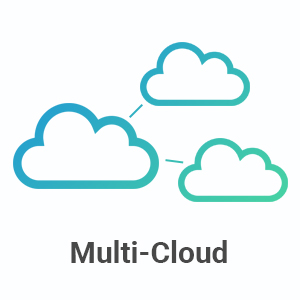


OpenSDS is an open source community working to address storage integration challenges, particularly in scale-out cloud native environments with heterogeneous storage platforms.
In OpenSDS, there is a problem occurring in synchronization and storage of large amount of data. The object storage migration between different cloud resources is one of the major problem statements. This problem overcome with the help of multi-cloud feature.
With multi-cloud an organization get leverages of two or more cloud computing platforms to perform various tasks. Organizations that do not want to depend on a single cloud provider may choose to use resources from several providers to get the best benefits from each unique service.
In a multi-cloud environment, there is as such no synchronization required among vendors for computation process. Multi-cloud offers the distribution of several cloud-assets, software, applications, and so forth among different cloud-hosting platforms.
The OpenSDS community has announced the Bali release which is the 2nd version of open source software for software-defined storage control. The Bali release feature supports the multi-cloud data storage over a single S3 object with REST API among multiple clouds. This feature of Bali release helped cloud providers to get the right cloud resources from different providers. For object storage migration the need of multi-cloud comes into picture in OpenSDS.
Object storage manipulates data in form of objects and units. Object storage is used to store large amount of data, unstructured data which contains images, videos, files, downloads because it provides a large capacity to store the data. Object storage saves the data in the form of object.
Multi-cloud support:
For multi-cloud data engine, the team designed the architecture diagram that provide the ability to migrate data across multiple clouds. The multi-cloud architecture diagram defines the concept of multi-cloud in OpenSDS clearly. Here we are going to see the Multi-cloud architecture diagram and its significance. The below mention diagram is the architecture diagram of multi-cloud.
The multi-cloud architecture includes the following components:
SAN FRANCISCO, Feb.1, 2019/ PRNewswire/– The Linux Foundation, the non-profit advancing professional open source management for mass collaboration, announced that Click2Cloud have joined the OpenSDS Project.
Click2Cloud has committed to extend the OpenSDS capabilities for Data Storage and Migration for a Multi-Cloud Design and Multi-Cloud Providers. Also, added the adapter for Ceph and GCP for S3 compatible interfaces. Further added the data mover interfaces for Ceph backend and GCP backend which helps to perform the migration as well.
Previously in OpenSDS, during object storage migration scenario user faced the problem of storage the large amount of data which is overcome by OpenSDS Bali new release of multi-cloud concept which provides multiple storage of data and security over a single S3 object with REST API among multiple clouds.